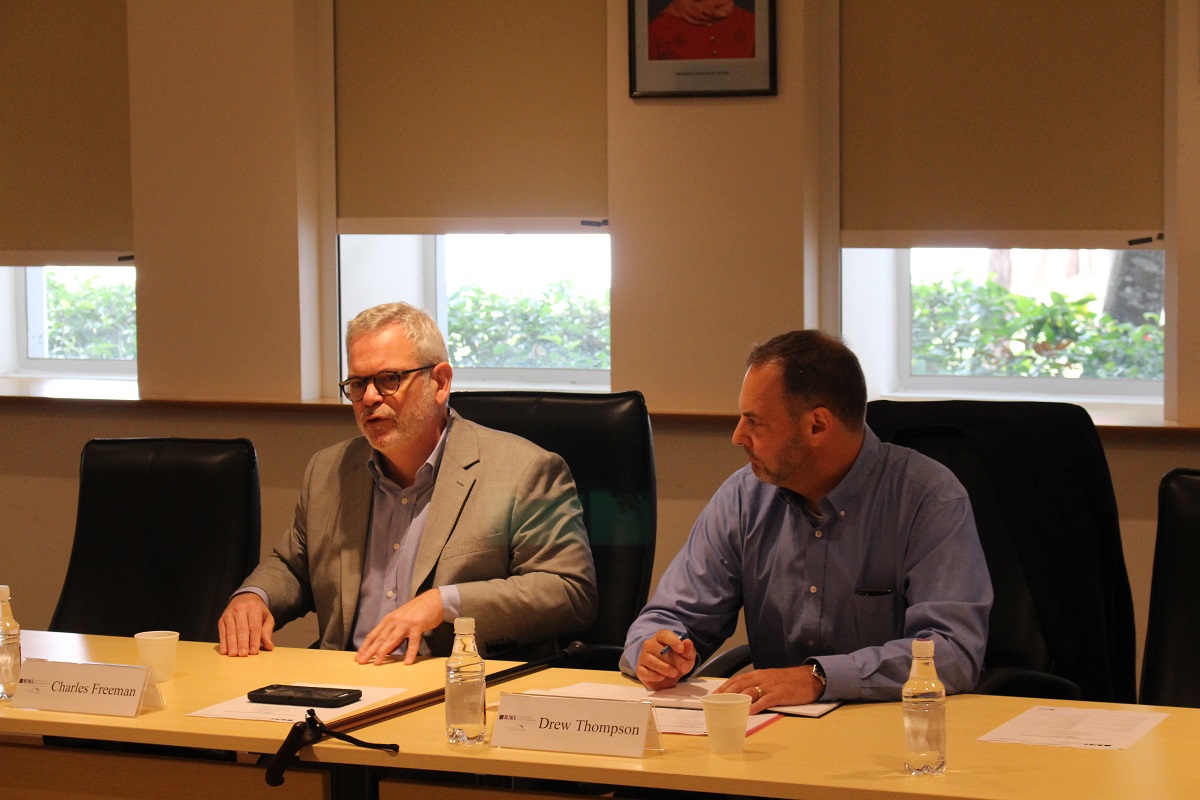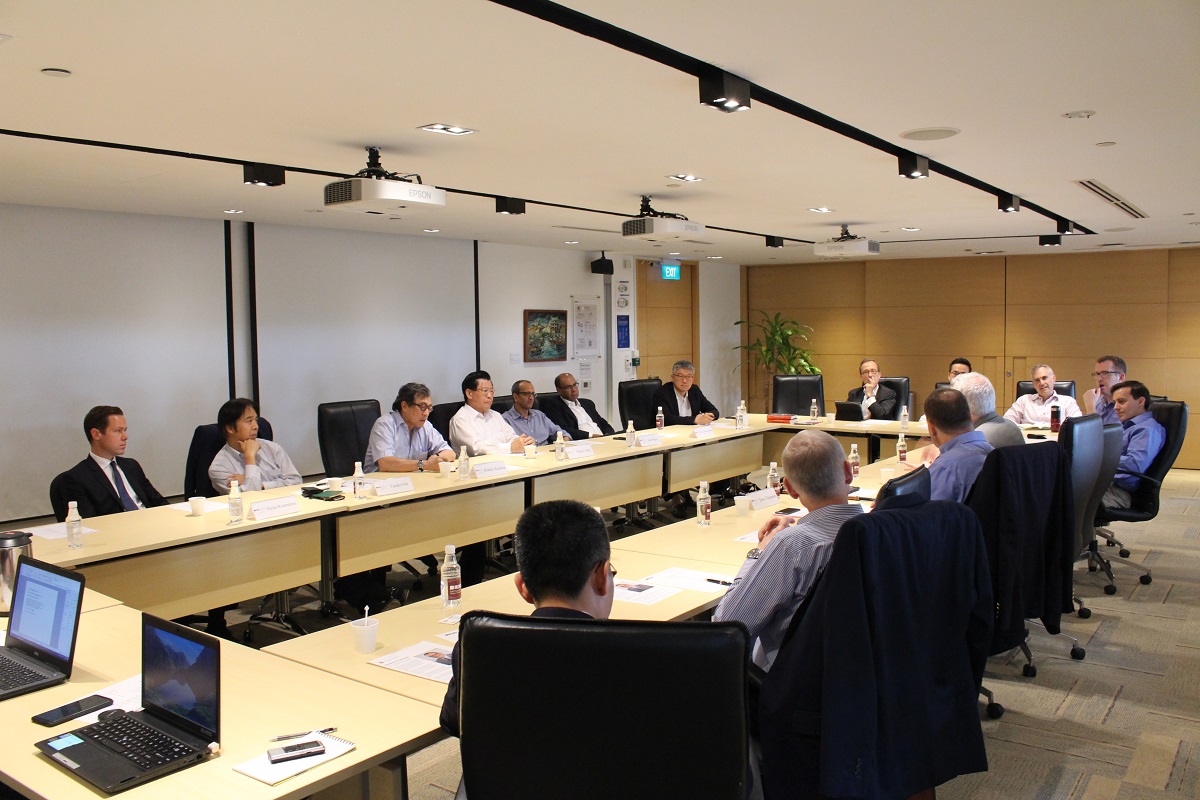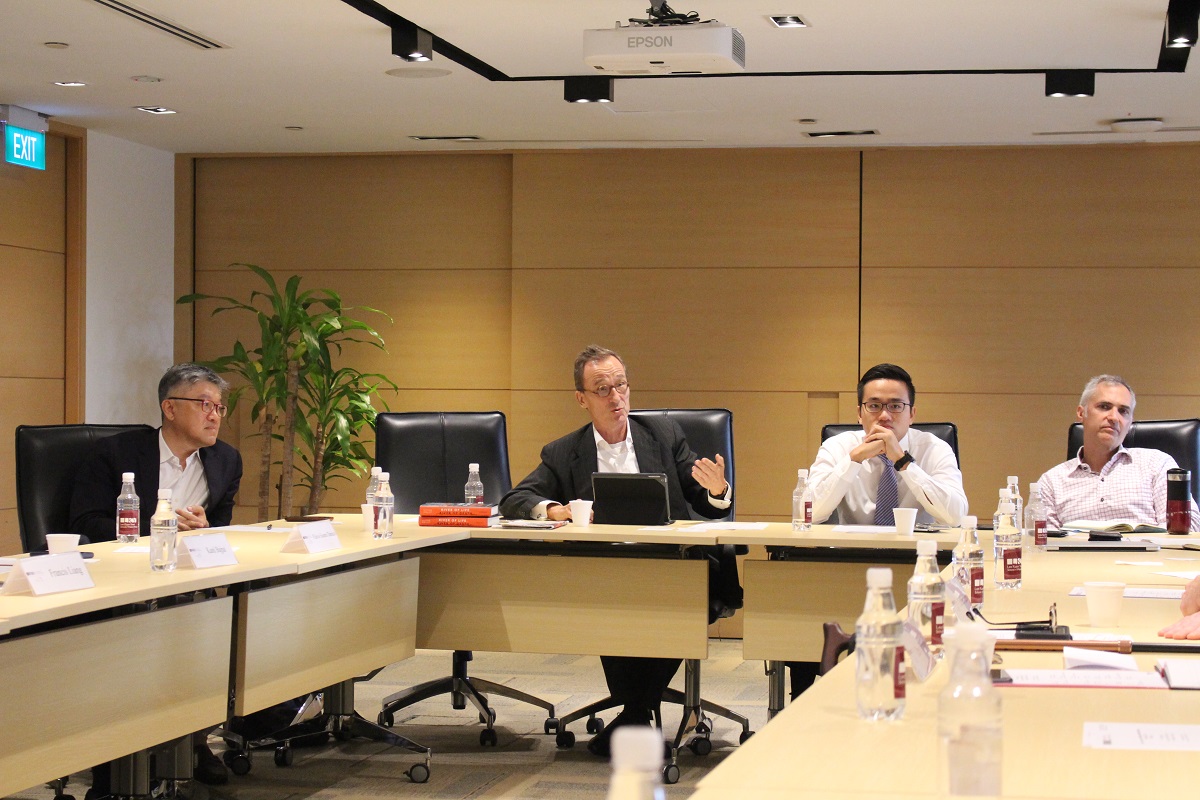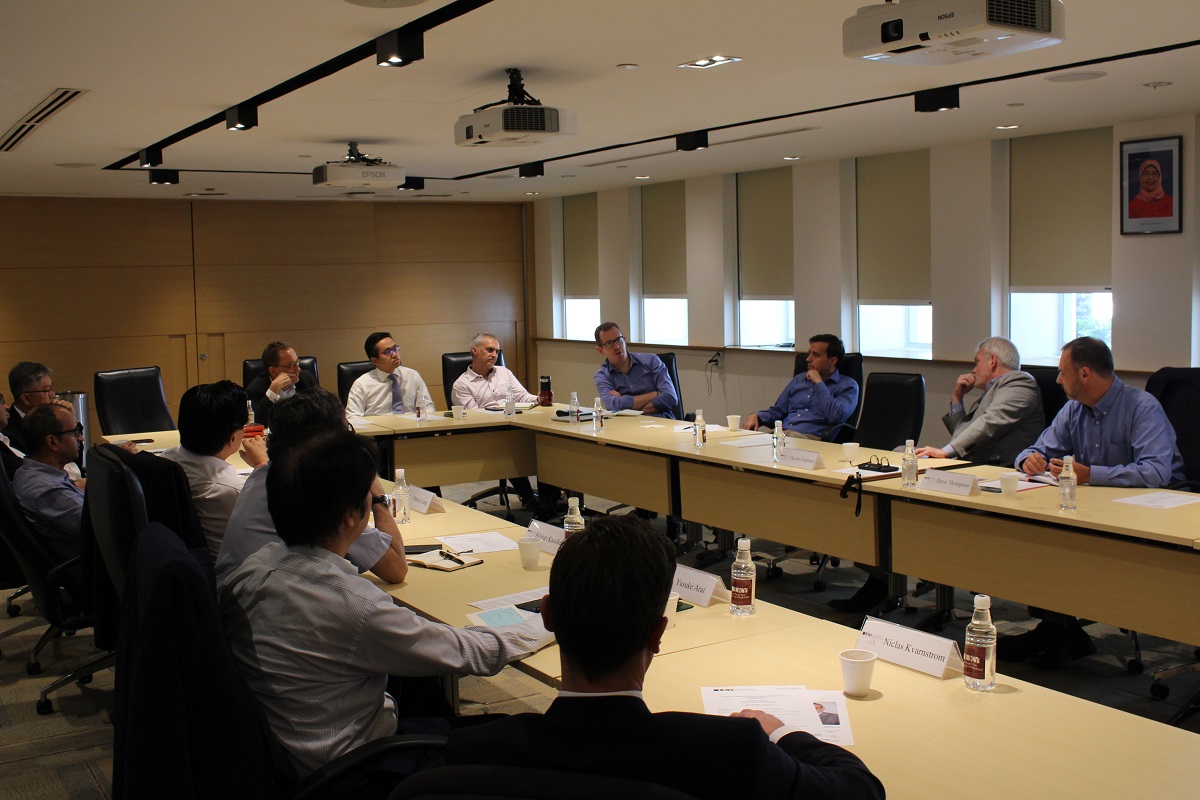 The Centre on Asia and Globalisation hosted Charles Freeman, Senior Vice President for Asia at the US Chamber of Commerce to speak at a closed-door roundtable on October 5, 2018. Drew Thompson moderated the discussion with guests that included representatives from government, industry and academia. Mr. Freeman provided an overview of the evolution of US trade policy, his perspective on the overall U.S.-China relationship, and prospects for future trade agreements between the United States and other countries.
The Centre on Asia and Globalisation hosted Charles Freeman, Senior Vice President for Asia at the US Chamber of Commerce to speak at a closed-door roundtable on October 5, 2018. Drew Thompson moderated the discussion with guests that included representatives from government, industry and academia. Mr. Freeman provided an overview of the evolution of US trade policy, his perspective on the overall U.S.-China relationship, and prospects for future trade agreements between the United States and other countries.
Event Coverage
Mr. Freeman noted that free trade has contributed to peace and stability globally since World War Two, even if it did not always directly benefit the United States or specific sectors of the U.S. economy. He noted President Trump’s realpolitik approach to trade and foreign policy is unique, and that personality-driven policy making makes it difficult to see coherent trends and strategy, though it was clear that the Administration clearly prefers bilateral negotiations to multilateral, enabling U.S. negotiators to exert greater leverage and pressure on counterparts.

The roundtable discussion participants noted that Chinese attempts to forestall the trade war in May 2018 were half-hearted, and even with erratic signals from Washington, it was somewhat surprising that China was unprepared for the Trump Administration’s imposition of tariffs, despite all the signs. Participants noted that public discourse in Beijing is highly politicized, raising questions about the quality of political analysis and information circulated internally and provided to Xi Jinping.
The Trump Administration has made it clear that they consider China a strategic competitor and are prepared to push back and defend against transgressions, including what Washington sees as unfair trade practices and industrial policy that threatens. Vice President Pence’s speech on China a few hours earlier underscored that the Administration sees China as a threat, validating assumptions that one U.S. goal of the tariffs is to pressure U.S. companies to shift manufacturing and supply chains out of China to the U.S. or elsewhere in the world. That shift, however would take time, perhaps years, since few countries have the infrastructure, skilled labour and aggregation of sub-suppliers that creates the efficiencies and scale to compete with China.

The use of national security arguments by the Trump Administration to advance its trade agenda is unprecedented and brings with it potential risks. It may not stand up to legal scrutiny over time because of the scope and range of industries that are being identified as strategically important to national security. The approach also threatens to undermine trade relations with other countries who may now seek to use the same argument. It was noted that China has long approached its economic development as a national security issue, so the U.S. is essentially mirroring China’s practice for the last forty years.
Participants discussed the U.S. business community’s frustration with China and the general agreement that the Trump administration is correct about the problems with China’s trade and industrial policies, such as Made in China 2025 which are inconsistent with WTO principles, disadvantages foreign companies, forces them to transfer technology, creates overcapacity and domestic champions. When China entered the WTO, it was admitted on the assumption that China would reduce government intervention in the economy and gradually liberalize. However, since then, government intervention in enterprises and the market has only strengthened. That said, the business community in general does not support tariffs as a tool to coerce China to open its markets and revise industrial policy and there is concern that tariffs will not be effective in the long run. There was agreement that the U.S. should have remained in the Trans-Pacific Partnership (TPP) as part of an effort to isolate China, and that an effective strategy to shape China’s policies is to foster closer trade relations with China’s other major trading partners, including Japan, South Korea and the EU. Progress updating the U.S.–Korea Free Trade Agreement (KORUS) and the new North American Free Trade Agreement (NAFTA), called for now US-Mexico-Canada Agreement (USMCA) are a step in that direction, as are announcements that Japan and the EU are ready to begin negotiations with the U.S. It was observed that the lack of U.S. attention on ASEAN was unfortunate and should be re-considered.

The discussion posited that the trade war between the U.S. and China will likely be drawn out and it is not going to be dramatically impacted by mid-term elections in the U.S. in early November. China’s strategy for dealing with U.S. pressure is thus far reactive, and there are no indications that there will be the sort of fundamental structural changes in China that would alter the U.S. approach. The assumption is that despite domestic debt and other internal challenges, Beijing remains confident that they can weather the storm.
The observation was made that both Beijing’s and Washington’s respective narratives of the bilateral relationship are focused on domestic audiences, and both posit that the relationship is inequitable and there are long-standing grievances. Following Vice President Pence’s speech, it is apparent that the U.S.-China relationship will not be able to return to is previous state, even after President Trump leaves office.